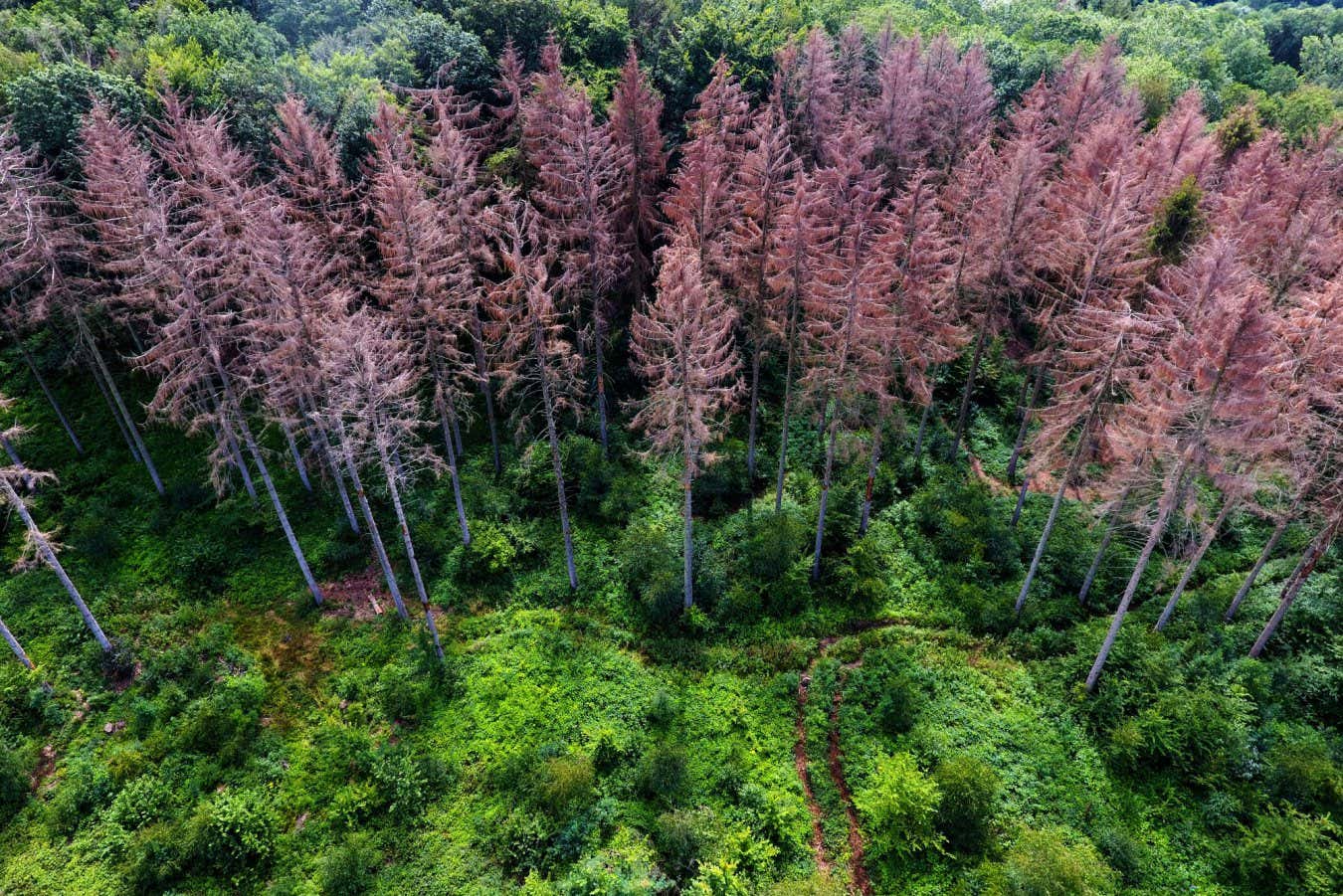A study of fossils from the Permian-Triassic extinction event 252 million years ago shows that forests in many parts of the world were wiped out, disrupting the carbon cycle and ensuring that Earth remained hot for millions of years
By James Woodford
4 July 2025
Global warming is causing forest die-offs today, just as it did during the Permian-Triassic extinction event
INA FASSBENDER/AFP via Getty Images
After a sharp rise in atmospheric carbon dioxide levels 252 million years ago, the death of forests led to a long-term shift in Earth’s climate, with greenhouse conditions persisting for millions of years.
Scientists working to understand this event, which caused the biggest mass extinction in Earth’s history, warn that a similar story may unfold if we continue emitting greenhouse gases.
Read more
The ocean is losing its ability to store heat as the planet warms up
Advertisement
The Permian-Triassic extinction event is thought to have been triggered by massive volcanic activity in the region that is now Siberia, which raised CO2 levels in the atmosphere.
The planet’s surface temperature increased by up to 10°C and, in equatorial regions, the average surface temperature soared to 34°C (93°F) – 8°C higher than the average today.
These conditions persisted for around 5 million years, resulting in the extinction of more than 80 per cent of marine species and 70 per cent of terrestrial vertebrate families, according to some estimates.
